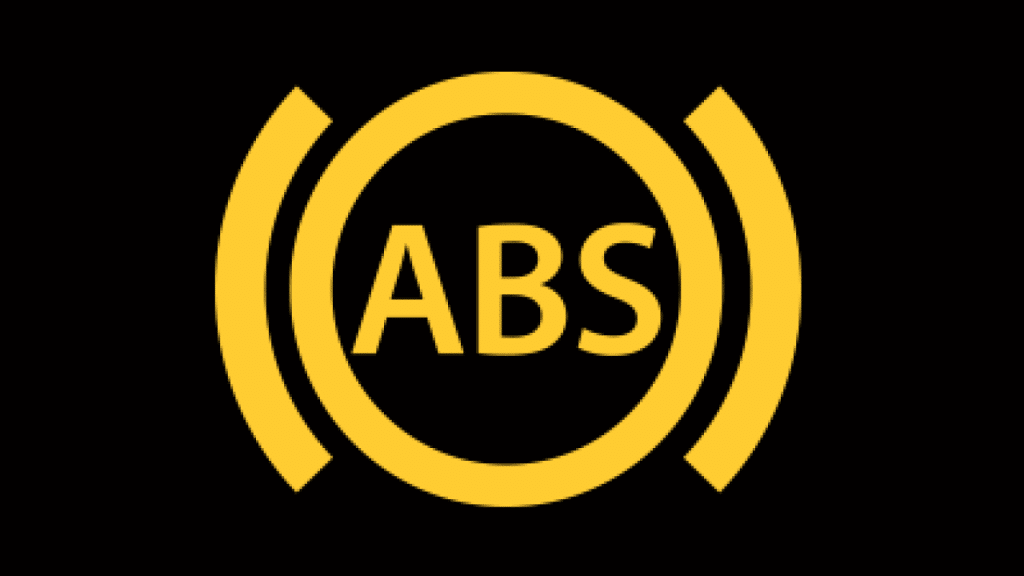Over the years, the braking system on some vehicles has become more complicated and improved drastically to ensure better safety for both the driver and passenger. Modern braking systems also reduce the risk of car accidents.
The Anti-Locking Brake system, or better known as ABS, was invented to provide more control to the driver. Your vehicle’s ABS is way more than just an upgrade of the traditional braking system.
If we go back roughly a hundred years, we will find that the first application for ABS was used on airplanes. It was only in the 1970’s that it was introduced for commercial use on a large scale, and started saving lives. Mercedes Benz was the 1st car company to introduce ABS in everyday cars. Thereafter, different brands of vehicle manufacturers added ABS systems to their luxury line vehicles.
So now everyone thinks your ABS system is there to get your vehicle into a standstill position as quick as possible. That is one of the main reasons for ABS, but not the most important. The ABS system is designed to prevent the vehicle from skidding across the road under harsh braking conditions while allowing maximum control of your vehicle. In simple terms, it helps the driver steer and have more control over the vehicle when braking suddenly or during an emergency, because the wheels can still turn and the vehicle can still move in whatever direction it’s facing. The easiest way to understand the true benefit of ABS is to use the acronym like advanced driving instructors do. They say: ABS gives you the Ability to Brake and Steer. This is in short exactly what the ABS system does. It controls braking to give you the ability to brake and steer at the same time.
A lot of us will remember the older vehicles without ABS used to slide across the road when you had to brake hard, and you had little or no control over the vehicle.
But the ABS system has advanced over the years so much, and is advancing at such a quick pace that it is difficult to keep up. ABS systems also change when certain setting is changed on your vehicle for example: when you put your vehicle in sports mode it will change the sensitivity of the ABS. On vehicles like the Volkswagen Amarok if you switch on the “off road” function it will actually activate a system called “offroad ABS”.
But how does ABS actually work?
The main function of the ABS is to prevent the wheels from locking up when braking during emergencies.
During normal braking the ABS is not active although the ECU (engine control unit) constantly measures signals from the wheel speed sensors. The ABS system is passive during normal braking, but when applying brakes suddenly, the wheel speed sensors will pick up that the speed of the wheels are reducing drastically which could cause the wheel to lock up. This information is then sent to the ECU which then sends a signal to the hydraulic unit. The hydraulic unit will energise a solenoid valve and the solenoid valve will separate the brake circuit from the master cylinder which will keep the brake pressure at that particular wheel constant. At this point, if the wheel speed sensor detects even more wheel speed deceleration, the ECU will send a larger current to move an armature to open a valve to allow brake fluid to be send back to the master cylinder. Pressure in the brake calliper is reduced to ensure less braking power at the wheel. As soon as the wheel speed sensors detect that the lower brake pressure allows the wheel to speed up again, the ECU will disengage the solenoid valve in order to increase the brake pressure again which will decelerate the wheel again. This cycle can be repeated up to 8 times every second. This sudden increase and decrease in brake pressure is what causes the vibration or pulsating feeling on the brake pedal when the ABS system kicks in under heavy/hard braking conditions. Thus, when the ABS works, the brakes are applied many times in a second, to prevent the wheels from locking and the vehicle from skidding under hard braking.
Under conditions where you have to brake in such a way that the ABS system has to activate you will feel a vibration coming from your brake pedal, and you will also notice that your hazard lights will activate in order to warn the other drivers on the road to take evasive manoeuvres in order to keep you and them safe.
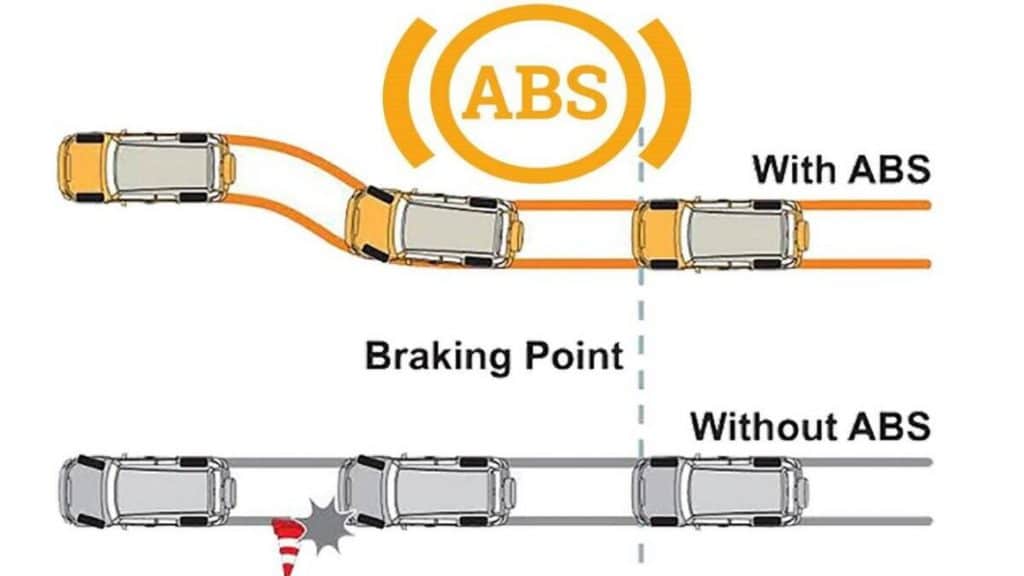
Advanced ABS features
Like mentioned, the ABS system has developed over time and became more advanced. There are some advanced features in the ABS system that contributes to safer, easier driving.
ESP: ESP, shortened for Electronic Stability Program, improves driving safety. One of the main purposes of the ESP is to prevent the vehicle from skidding, but it also offers other value-added functions, such as hill assist. Hill assist is a feature that makes driving uphill easier. When the driver releases the brake pedal for a pull-away uphill, the hill assist function will still keep the brakes applied for two or more seconds, giving the driver enough time to accelerate and move forward without rolling backwards.
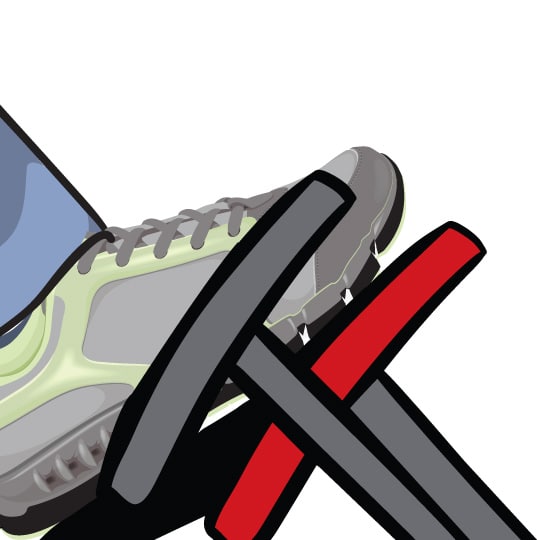
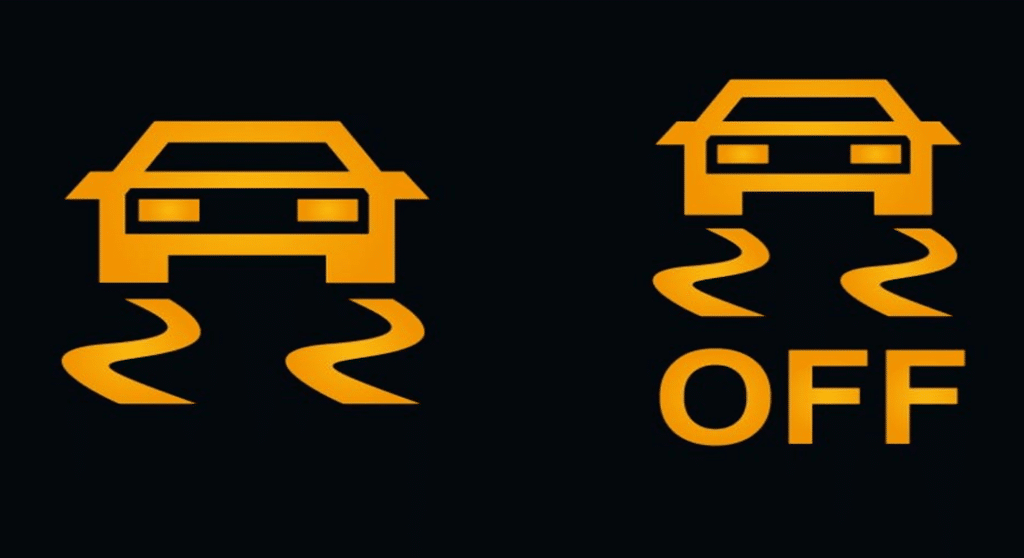
TCS: The TCS, shortened for Traction Control System, is a system that detects a loss of traction among the vehicle’s wheels. When one of the wheels of the vehicle loses its grip on the road, this system will automatically apply brakes to that individual slipping wheel. Vehicles usually loses traction on icy, rainy, muddy or sandy roads.
BAS: BAS is shortened for Brake Assist System. This system applies more force to the brakes when a driver suddenly applies brakes, to help stop the moving vehicle quicker. BAS is a newer technological development that loads the brakes with hydraulic pressure milliseconds before an impending crash. This helps deliver more stopping power to the brakes even sooner. This is throughout a safety feature.
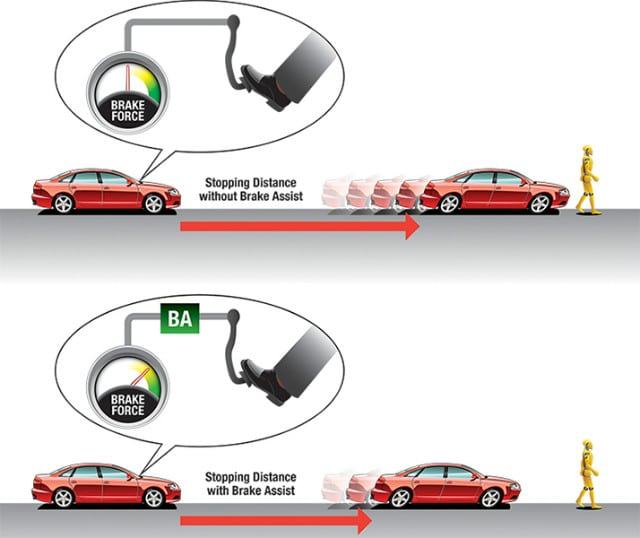
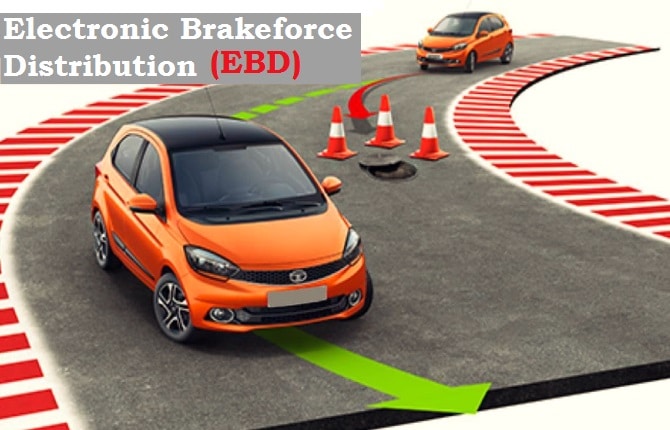
EBD: EBD is shortened for Electronic Brake Force Distribution. A vehicle’s weight can shift on the four wheels as soon as the brakes are applied. This system ensures that the correct brake force on each wheel is equal, so that the wheels still hold traction while brakes are applied.
Amarok Offroad ABS
When Volkswagen launched the Amarok back in 2010, it came with a host of new features in the popular bakkie market. One of those features is called Offroad ABS. This system can be activated by the push of a button as soon as you go off paved roads. The ABS calibration will be changed to allow a split second longer “lock up” of the wheel. This lockup will allow foreign matter like soil, rocks and sand to build up in front of the wheels which in turn causes more friction and therefore more stopping power on dirt roads. VW claims offroad stopping distance decreases of up to 30% shorter. Offroad ABS also recalibrates the traction control system of the Amarok for quicker response on slippery dirt roads where those corrugations can send you sideways in the blink of an eye. Another feature of the offroad button is that it activates the hill decent control on the Amarok. These systems combined made the Amarok extremely stable and much safer on dirt roads and offroad conditions.
Brake disc wipe in Amarok
Volkswagen went even further with safety features and used the braking system for feature called Brake Disc Wipe. Although unknown to most, this feature is activated without the driver even knowing. In rainy conditions the system is activated by turning on your wipers. At prescribed intervals the brake system will apply a very light pressure to the callipers in order to “wipe” your brake disc. The idea is that clean and dry brake discs perform better and will therefor decrease stopping distances in wet conditions

However, like any other system or components in your vehicle, there may occur some issues or problems in the ABS system as well. Luckily, in modern vehicles, warning lights on the dash board can make you aware if such issues occur. When the ABS warning light appears, it indicates that there is a faulty component in the system. Make sure to take is to the experts to determine the problem quickly, before it gets dangerous. There are a few things to look at when it comes to fault finding on the ABS system, such as wheel speed sensors, tyre sizes, ABS pumps, control unit or even wiring. At VAG Spec Centre, we can sort out any problems on your vehicle’s ABS system.


